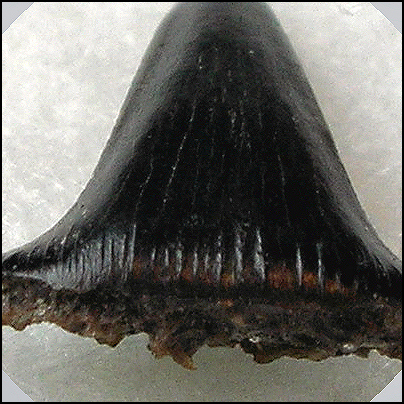| Hybodus novojerseyensis |
|
The holotype is fairly complete and is probably a latero-anterior tooth. The main cusp is symmetrical with a triangular outline in labial view. It is leaning lingually in profile view. The cutting edges are straight and very salient. The labial face of the cusp is convex transversally. It bears short vertical and parallel folds located on the lateral parts of the tooth, the median part of the cusp being devoid of folds. The lingual face is very convex transversally; the basal two-thirds of its height is covered by strong vertical and parallel folds. In profile view, the cusp is leaning lingually. There were probably a pair of lateral cusplets but only one is preserved on one side. The cusplets are rather low and well separated from the cusp. In profile view, they are more lingually curved than the main cusp. They show the same folds as the main cusp, lingually and labially. The root is not very high and well preserved. Its basal face is very flat. There is no a labial hollow, contrary to what can be observed in many hybodont species. In labial view, the basal edge is rectilinear and the lingual part of the root is rounded, with a clear and broad groove below the cusp boundary.
Hybodus novojerseyensis
Close up of wrinkles or parallel folds
|

